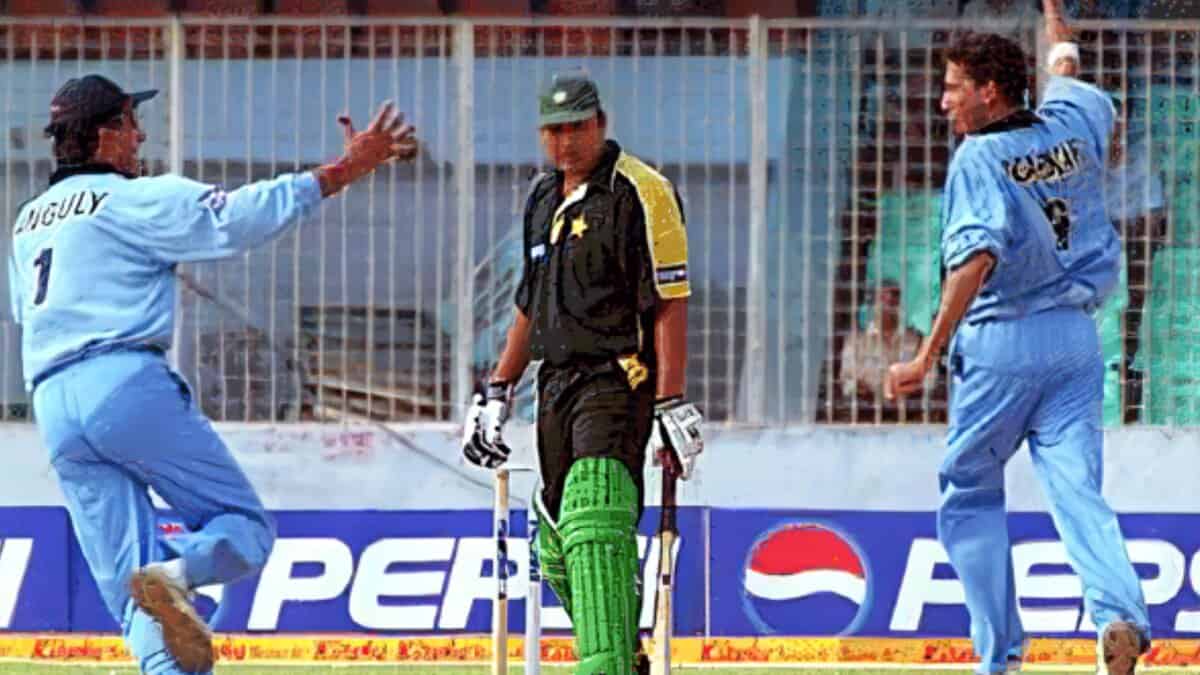
A look back at the Pakistan cricket team from the 1970s through the early 2000s evokes a deep sense of nostalgia. This was a team that, until the late 1990s, was widely considered superior to India, only beginning to lose momentum afterward.
Few teams in world cricket ever generated as much excitement—and unpredictability—as Pakistan did during this era. I first became fascinated with the sport in the early seventies. Although India and Pakistan weren’t playing each other at the time, I was familiar with the Pakistan side, captained by Intikhab Alam. Mohsin Khan later replaced him, and then Mushtaq Mohammad, one of the five renowned Mohammad brothers. When cricketing relations resumed with India in 1978, Pakistan won the first series, only to be defeated in the subsequent one in India, which was led by the all-rounder Asif Iqbal, who learnt cricket in Hyderabad and immigrated to Pakistan.
Undeniably, Pakistan was a side packed with flair, raw talent, and mercurial brilliance.
Match-winners and stars
From the majestic batting of Javed Miandad, Zaheer Abbas, Saeed Anwar, and later Inzamam-ul-Haq, to the fiery pace of Imran Khan, Sarfaraz Nawaz, and later Wasim Akram, Waqar Younis, and Shoaib Akhtar, Pakistan consistently produced match-winners who could change the game in a single session. Aquid Javed, Azeem Hafeez were also integral part of the team. Three batsmen who seldom failed against India were the talented opener Saeed Anwar, the doughty opener Mudassar Nazar, and middle-order mainstay Javed Miandad. Later, Yousuf Youhana (now Mohammad Yousuf) also became a prolific run-scorer against India. Abdul Qadir and later Mushtaq Ahmed and Saqlain Mushtaq added guile with their spin, while Moin Khan and Rashid Latif were sharp behind the stumps and chipped in with important, unconventional runs down the order.
In the 1980s, Pakistan’s openers were Moshin and Muddasar, and Rameez Raza thereafter. With the Middle order filled up with the likes of Zaheer Abbas, Qasim Omar, Salim Malik, Javed Miandad, Wasim Raza, Izaz Ahmed, and Wasim Bari used to be the keeper. Later, Moin Khan joined.
Aamir Sohail, Inzamam, and Saeed Anwar were 90s products.
The notable feature of Pakistan’s domination under Imran Khan was the abrupt end of the little master Visvanath’s career and the loss of captaincy for Gavaskar in the 1982 India tour of Pakistan. The crowning glory came in 1992 when Imran Khan’s “cornered tigers” lifted the World Cup at the MCG, a victory etched forever in cricketing folklore. Following this, under the leadership of Wasim and Waqar, Pakistan remained a side no opponent could take lightly, capable of brilliance and chaos in equal measure.
By the early 2000s, with Shoaib Akhtar’s raw pace, Inzamam’s elegance, Mohammad Yousuf’s class, and Shahid Afridi’s explosive batting, Pakistan cricket continued to embody passion and unpredictability.
The head-to-head record
The historical dominance against India is evident in the record books:
Test Matches: In the two decades from 1978–79 to 1998–99, Pakistan had 33 Test match encounters with India and held a clear advantage with eight wins to India’s four, with 21 draws. However, from 2003–04 to 2007–08, India began to lead, winning four of the 12 Test encounters compared to Pakistan’s three wins and five draws—a shift aided by the double and triple centuries scored by Virender Sehwag in Multan and Rahul Dravid’s double century in Rawalpindi (270) and Sehwag’s 254 in Lahore. Due to Sanjay Manjrekar’s resilience and talent (218) in Lahore, India was able to draw the four-test series in 1989 when Sachin debuted in test cricket.
ODIs and T20s
From the first ODI in 1978 until 1999, Pakistan enjoyed a clear dominance over India, winning 43 matches compared to India’s 27. A large share of this advantage came from Sharjah, where Pakistan recorded 17 victories over India. However, with the decline of matches in Sharjah after 2000, the tide began to turn. Between 2000 and 2010, India edged ahead with 31 wins to Pakistan’s 29.
Post-2010, Pakistan’s decline and India’s rise in limited-overs cricket made the contest largely one-sided. In ODIs since then, India leads with 13 wins against Pakistan’s 4. The T20 format has been even more lopsided, with India winning 12 encounters while Pakistan has managed only 3.
Setbacks and resilience
The team faced significant setbacks after the golden era. The 2009 terror attack on the Sri Lankan team in Lahore shut down international cricket in Pakistan for nearly a decade. This was followed by the 2010 spot-fixing scandal in England, one of the most infamous episodes in cricket history, which saw several players conspire to deliberately bowl no-balls, deeply shaking the sport’s integrity and bringing disrepute to Pakistan.
Despite this, Misbah-ul-Haq brought a much-needed period of calm, discipline, and respect back to the team with his captaincy and consistent batting. Later, Sarfraz Ahmed led Pakistan to victory in the ICC Champions Trophy in 2017.
However, the team subsequently experienced an era of inconsistency and leadership instability, though Babar Azam has since risen as a modern-day batting great. Currently, the team faces renewed challenges with captaincy crises, poor planning, and inconsistent selections, often at the expense of developing young talent.
For fans, Pakistan cricket was never just about winning or losing—it was about the thrill of not knowing what would happen next. That sheer unpredictability made their cricket unforgettable.
Dr K Sudhir Kumar is a prolific writer and Head of the Journalism Department, Potti Sreeramulu Telugu University in Hyderabad. He can be reached at headjournalismdept@teluguuniversity.ac.in



